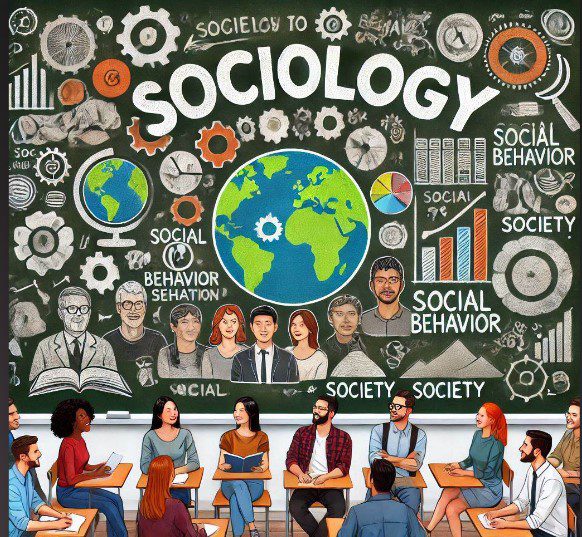Religiosity is a multifaceted concept that has been studied extensively in sociology, psychology, anthropology, and religious studies. It refers broadly to the degree to which an individual adheres to, practices, and internalizes the beliefs, values, rituals, and moral codes associated with a particular religious tradition. While religion itself represents a structured system of beliefs and practices shared by a community, religiosity refers to the personal, psychological, and behavioral engagement of individuals within that system. Scholars emphasize that religiosity cannot be understood as a single-variable phenomenon; instead, it encompasses multiple dimensions that interact to shape how individuals experience and express their religious commitment. This multidimensional understanding allows researchers to assess variations in religious involvement across time, culture, and social groups.
Understanding Religiosity
In academic discourse, religiosity is defined as the extent to which religion influences a person’s attitudes, behaviors, worldview, and identity. It reflects not only participation in religious rituals but also internal beliefs, emotional attachment to religion, and the role religion plays in everyday life. As such, religiosity is both internal (beliefs, experiences, feelings) and external (behaviors, practices, rituals).
Researchers often differentiate between intrinsic and extrinsic religiosity. Intrinsic religiosity encompasses a sincere, inward commitment to religious beliefs, where religion serves as a guiding principle of life. Individuals with high intrinsic religiosity internalize their faith deeply, and religious values meaningfully shape their decisions and worldview. Extrinsic religiosity, on the other hand, involves engagement with religion for practical, social, or psychological benefits. For example, one might participate in religious activities to gain social status, community acceptance, emotional support, or cultural belonging without deeply internalizing the spiritual elements.
Religiosity also varies across cultures, age groups, and historical periods. For instance, research indicates that religiosity often increases during times of crisis, uncertainty, or social change. It can function as a coping mechanism, a source of identity, or a means of social cohesion. In many societies—especially traditional or collectivist cultures—religiosity remains a central part of social life, shaping norms, family structures, and community behavior. In more secular societies, religiosity may take individualized forms, with people identifying as “spiritual but not religious,” indicating a personal but non-institutional orientation.
Importantly, religiosity does not always correlate with membership in a religious institution. One may identify strongly with religious beliefs while not attending formal rituals regularly. Conversely, some individuals may participate in religious rituals for cultural or familial reasons without possessing strong personal belief. For this reason, studying religiosity requires a multidimensional approach. This is where the concept of dimensions of religiosity—most famously proposed by sociologist Charles Glock—becomes essential.
Dimensions of Religiosity
To capture the complexity of religious involvement, Charles Glock (1962) proposed five interrelated dimensions of religiosity: ideological, ritualistic, experiential, intellectual, and consequential. These dimensions help scholars analyze the various ways in which religion manifests in individual and collective life. Each dimension represents a specific aspect of religious expression, and together they provide a comprehensive framework for assessing religiosity.
1. Ideological Dimension (Belief Dimension)
The ideological dimension refers to the core beliefs and doctrinal teachings that a religion prescribes. It includes belief in the existence of God or gods, the nature of the divine, life after death, moral laws, prophetic teachings, and sacred texts. Individuals with a high level of ideological religiosity strongly affirm and accept these beliefs as true.
This dimension is fundamental because belief systems shape how individuals interpret their world and make meaning out of life events. For example, belief in divine justice may influence how one deals with suffering, loss, or adversity. In Islam, belief in tawhid (the oneness of God), prophethood, angels, and the Day of Judgment are central ideological components. Similarly, in Christianity, belief in the Trinity, salvation, and resurrection form the foundation of faith.
The ideological dimension varies among individuals even within the same religious tradition. Some may accept all doctrines without question, while others may selectively adhere to certain beliefs. Understanding this dimension allows scholars to assess how deeply religious teachings are internalized and how they shape attitudes and values.
2. Ritualistic Dimension (Practice Dimension)
The ritualistic dimension focuses on the outward expression of religious commitment through rituals and ceremonies. These practices may include daily prayers, fasting, attending worship services, performing pilgrimages, reading scripture, and observing religious festivals. Rituals hold cultural, moral, and emotional significance, reinforcing an individual’s connection to the religious community and fostering a sense of belonging.
For example, Muslims perform five daily prayers (Salah), Christians participate in Sunday worship and sacraments, Hindus perform puja rituals, and Buddhists meditate as a religious practice. Participation in these rituals is often seen as a marker of religious commitment, although it does not necessarily reflect internal belief.
Researchers note that the ritualistic dimension is often easier to measure than others because it involves observable behaviors. However, high ritual participation does not always indicate strong religious belief; it may be motivated by cultural expectations, family traditions, or social pressure.
3. Experiential Dimension (Emotional or Affective Dimension)
The experiential dimension refers to the emotional and subjective experiences associated with religion. This includes feelings of closeness to the divine, moments of spiritual awakening, religious ecstasy, inner peace during worship, or emotional comfort drawn from faith. It also encompasses experiences of repentance, guilt, hope, and spiritual inspiration.
Experiential religiosity is deeply personal and varies widely among individuals. For some, religious experience is intense and transformative, while for others, it may be subtle or infrequent. In many religions, mystical experiences—such as Sufi spiritual states in Islam or Christian contemplative prayer—are highly valued as evidence of deep spiritual connection.
Researchers consider this dimension crucial because emotional experiences often strengthen religious identity and increase commitment to religious practices.
4. Intellectual Dimension (Knowledge Dimension)
The intellectual dimension addresses the knowledge and understanding an individual has about their religion. This includes familiarity with religious texts, historical context, ethical teachings, doctrines, and laws. It does not necessarily imply belief or practice; rather, it indicates a cognitive engagement with religious content.
Individuals with strong intellectual religiosity seek to understand the rationale behind religious teachings. They may study scripture, attend lectures or classes, or engage in theological discussions. In many religious traditions, acquiring knowledge is considered an act of devotion. For example, in Islam, seeking knowledge (ilm) is a religious obligation.
This dimension is essential in distinguishing between those who follow religion passively and those who engage critically and intellectually with their faith.
5. Consequential Dimension (Moral or Behavioral Dimension)
The consequential dimension refers to how religious beliefs and teachings influence a person’s daily behavior, moral decisions, lifestyle, and interactions with others. It includes ethical conduct, honesty, compassion, charity, modesty, and avoidance of prohibited actions. This dimension assesses whether religious teachings translate into real-world behavior.
For example, religious teachings may influence one’s approach to marriage, parenting, work ethics, generosity, or conflict resolution. A person may refrain from harmful behaviors or practice social justice, charity, and empathy due to their religious values.
This dimension is particularly important for sociologists because it shows the social impact of religiosity. High consequential religiosity indicates that religion is not merely a set of beliefs or rituals but a guiding force in everyday life.
Conclusion
Religiosity is a complex and dynamic construct that involves far more than participation in religious rituals or adherence to doctrinal beliefs. It encompasses a broad range of internal and external expressions that shape how individuals understand themselves, relate to society, and interpret the world. The multidimensional model of religiosity—ideological, ritualistic, experiential, intellectual, and consequential—offers a comprehensive framework for analyzing religious commitment in academic research. Together, these dimensions reveal that religiosity is not uniform; it varies by culture, context, personality, and social environment. Understanding these dimensions allows scholars, educators, and researchers to examine religion’s influence on human behavior, identity formation, and social life with depth and nuance.
Frequently Asked Questions (FAQs)
1. What is the difference between religion and religiosity?
Religion is an organized system of faith and worship, while religiosity measures an individual’s devotion to and engagement with their religion.
2. How does religiosity impact personal behavior?
Religiosity often shapes moral choices, interpersonal relationships, and responses to challenges.
3. What factors influence an individual’s level of religiosity?
Cultural background, family upbringing, personal experiences, and societal norms significantly impact religiosity.
4. Is religiosity declining worldwide?
While secularization is rising in Western countries, religiosity remains robust in many developing regions.
5. What are the psychological benefits of religiosity?
Religiosity provides emotional support, reduces stress, and fosters a sense of purpose and belonging.
6. Can religiosity coexist with secular values?
Yes, many people integrate secular ethics with religious beliefs, promoting tolerance and mutual respect.
Societyopedia is trying to provide better understanding of our society!


